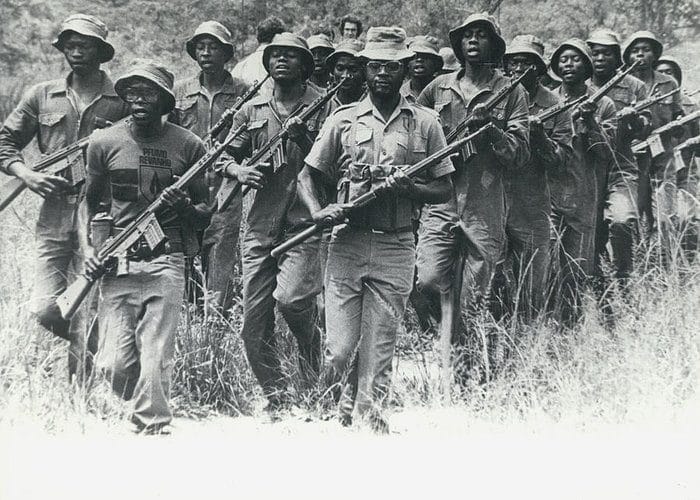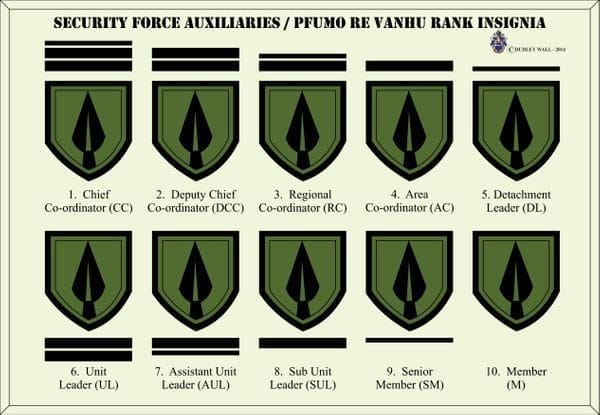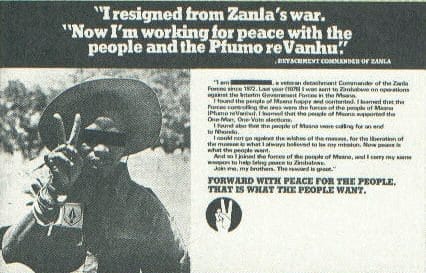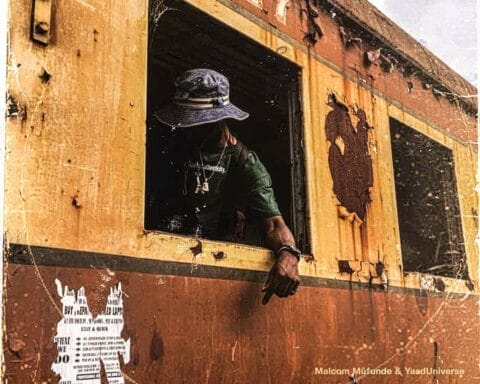Pfumo re Vanhu was formed in 1978 as a result of the internal political settlement and the establishment of Zimbabwe Rhodesia under the leadership of Bishop Abel Muzorewa. Several ZANLA (Zimbabwe African National Liberation Army) guerrillas of the Reverend Ndabaningi Sithole’s faction who had been trained in Uganda joined the SFAs as they found themselves in a position that was unacceptable to them and were thus used as the basis of a new unit within the Rhodesian armed forces. They were placed under the command of the Special Forces Brigade and were funded by the Prime Minister’s Office and administered by the BSAP Special Branch.

The opportunity was used to recruit and train more men from the civilian sector and all were then deployed as soldiers in the Tribal Trust Lands as an effective means to protect their own homes. In 1979 the units were funded by the Ministry of Defence.
By 1978 the Rhodesian government saw the value of the unit, who up until this time had deployed with their typical half civilian, half uniform gear and had kept their old Soviet block weapons. One of the first priorities while deployed was to see that the April 1979 elections went well. The SFAs had an influence on the outcome of the elections and Muzorewa’s United African National Council (UANC) gained many seats. There were claims of irregularities and the war did not appear to be coming to a close despite the results of the elections which everybody in the country participated in. ZANLA (Mugabe faction) and ZIPRA continued their own war against the new Zimbabwe Rhodesia government.


In August the SFA Rear HQ was situated at the Imperial Tobacco Company at Msasa and at the same time the AQ staff, MT and ordnance depot moved to the new site, leaving only the command, operational and liaison staffs at KGVI Barracks in Salisbury.
A Central Training School was set up at Domboshawa on the north eastern outskirts of Salisbury to give formal training to all members. Instructors were detached from various arms of service to ensure a high standard of training. Discipline was high on the list of priorities. Standard infantry training was given and recruitment was aimed at the 18 to 45 age group. Very few people were found unacceptable for training although the older recruits sometimes struggled to keep up. Seventeen different types of courses were run. These were the Senior Staff Orientation, Liaison Officers, Detachment and Unit Leaders, Junior Leaders, Area Administrators, Trackers, Basic Instructors, Radio Operators, Basic Admin, Q Accounting, Troop Medical Orderly, Drivers and Intelligence. Instructors were seconded from the Army, BSAP, Air Force, Guard Force and Intaf.
The SFAs worked very closely with Intaf and plans were made to put them together under command of the Ministry. However, logistics and admin were just too big and the SFAs remained with the army.

The creation of the unit was difficult to accept by the European community who were extremely suspicious of the integrity of the SFA soldiers. However they were eventually accepted once the units deployed in their respective areas and they proved that they could do the job on the ground successfully. The enemy indicates that the SFAs were also an extreme worry for them in that they thought the SFAs were a mouthpiece for spreading the word of the requirement for peaceful one man one vote elections.
A booklet was issued to SFA soldiers which laid out the message to be given to the people in order to standardise the message and ensure consistency in the efforts to achieve peace.
The SFAs were deployed against ZANLA and were often involved in skirmishes which led to casualties on both sides. ZANLA realised that the SFAs were becoming a real threat and went out of their way to try and neutralise them by attacking them at every opportunity. From June to December 1979 several successful engagements by the SFAs took place against the enemy and 66 terrorists were killed. Another 93 were captured. SFA losses for this time period were 98 killed in action or vehicle accidents while a further 100 were wounded or injured.
Sources
COPY Rhodesia – Intaf. Pfumo re Vanhu. Retrieved from https://dudleywall.webs.com/pfumorevanhu.htm. [Accessed 20 June 2021].











